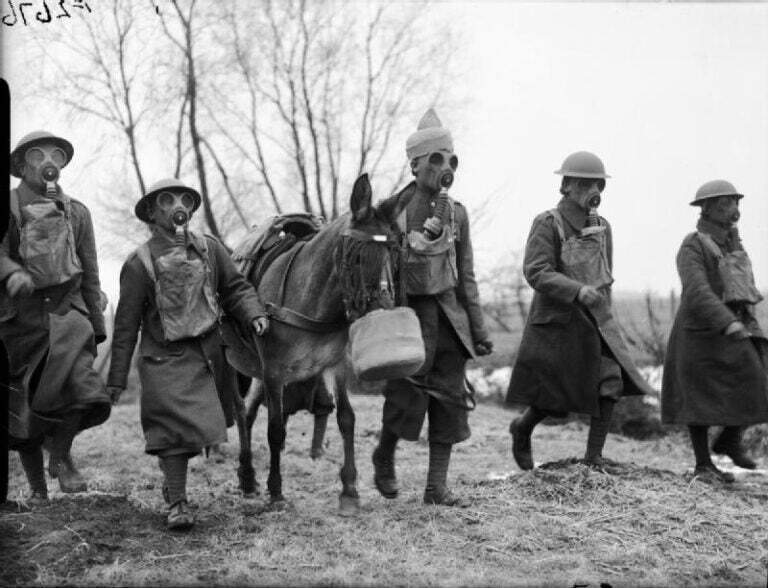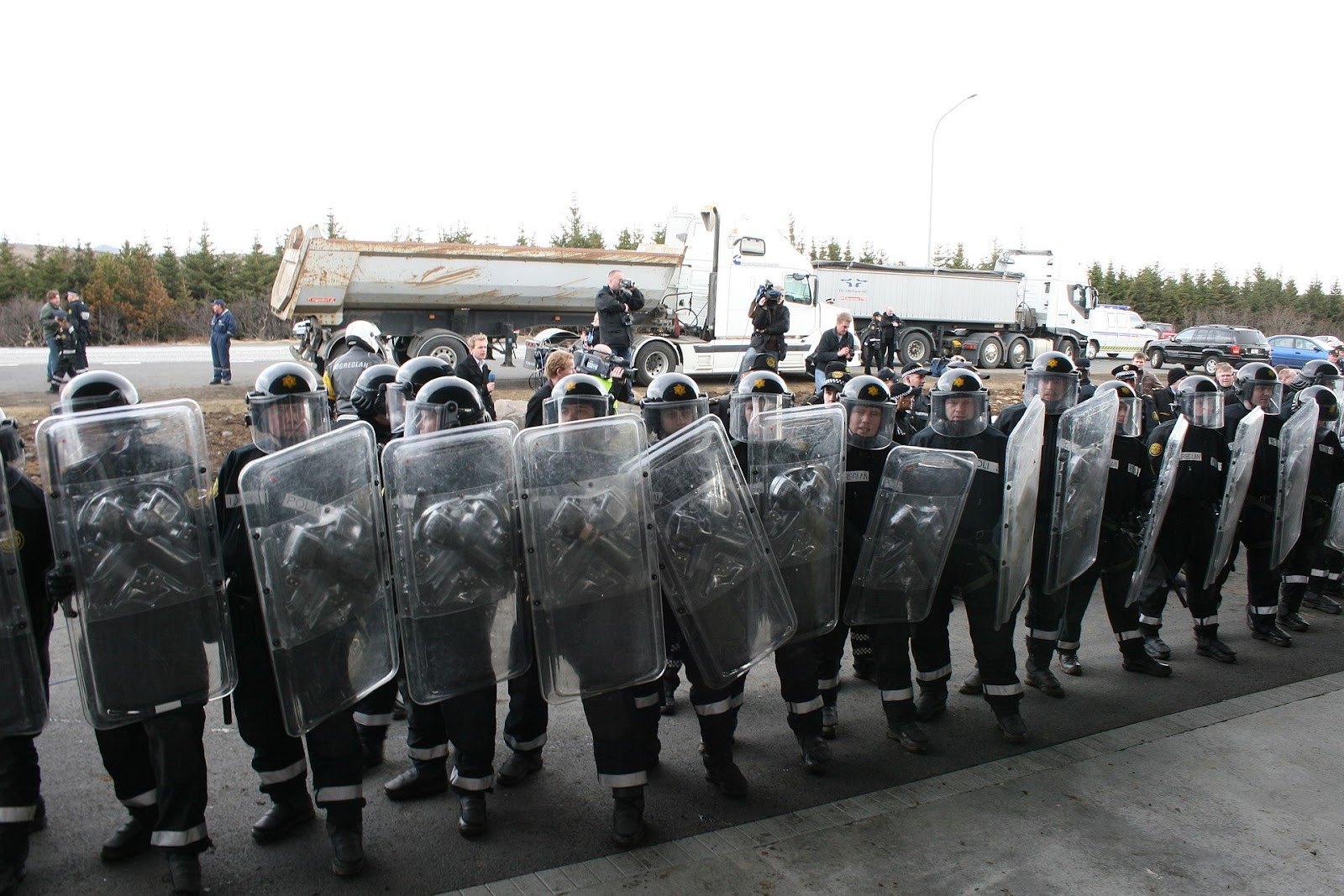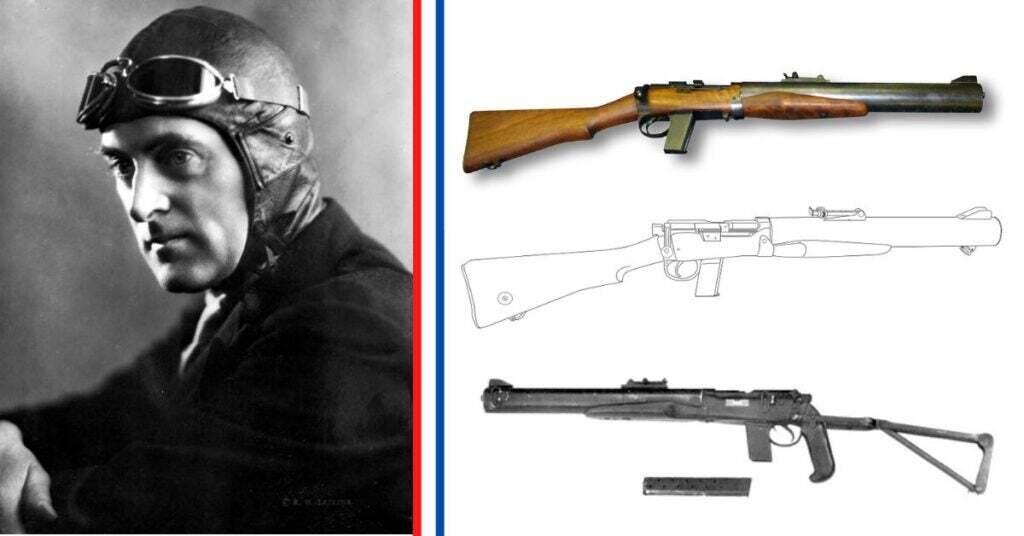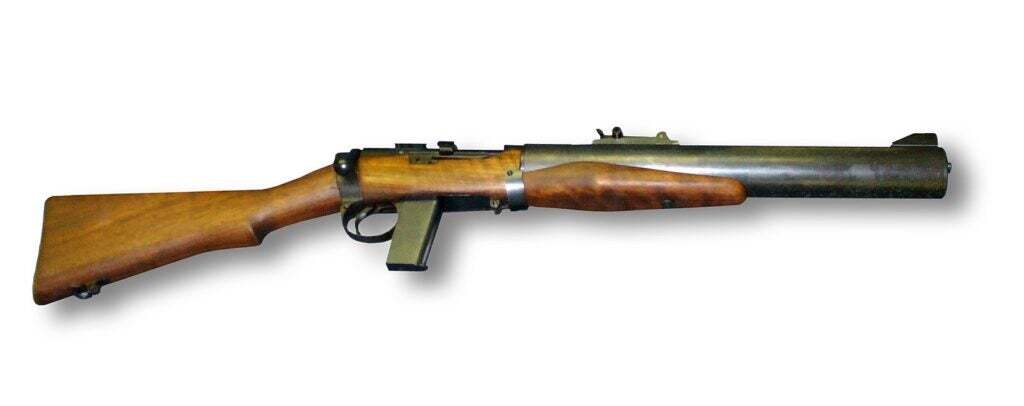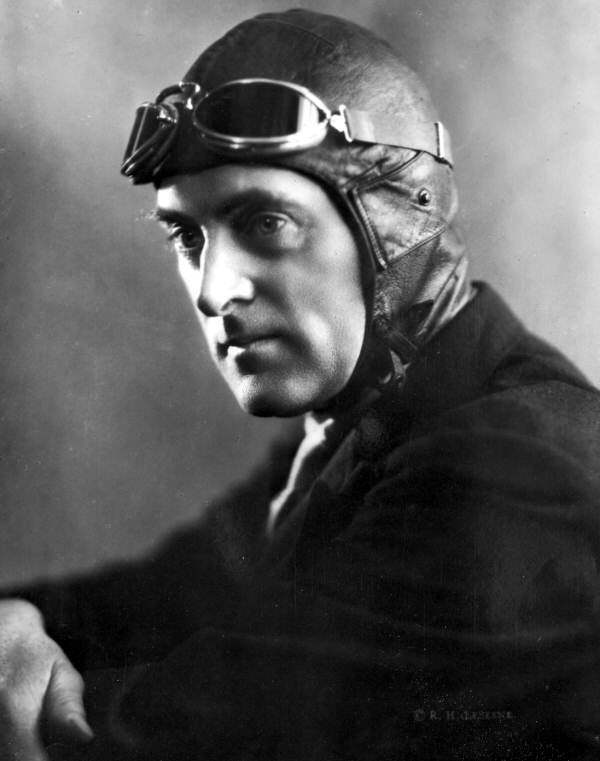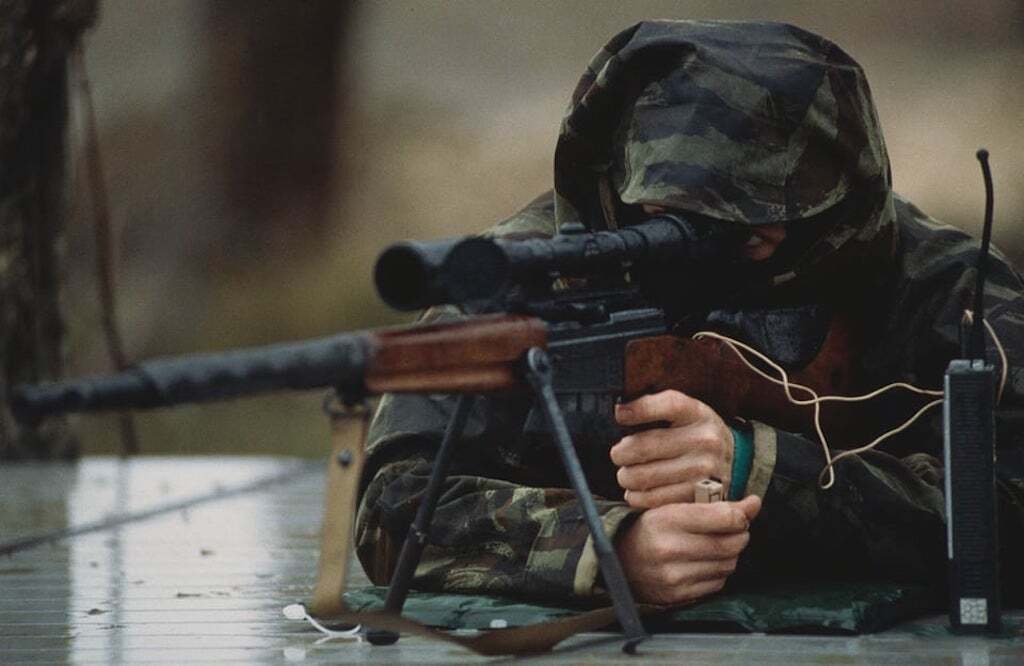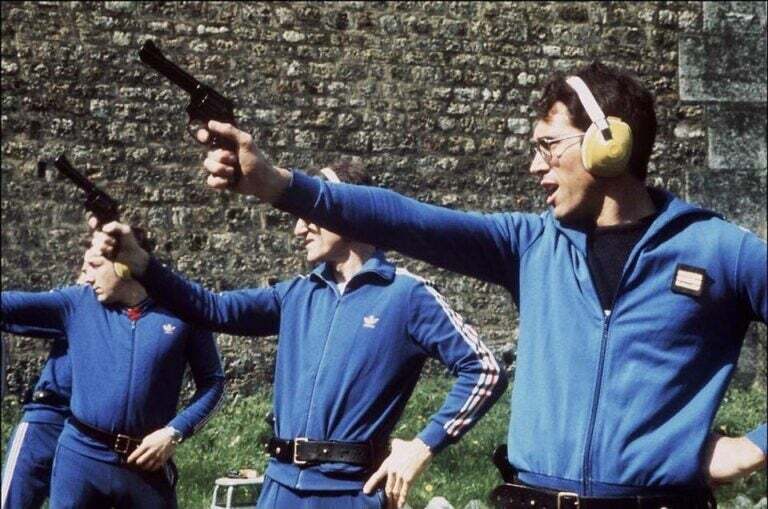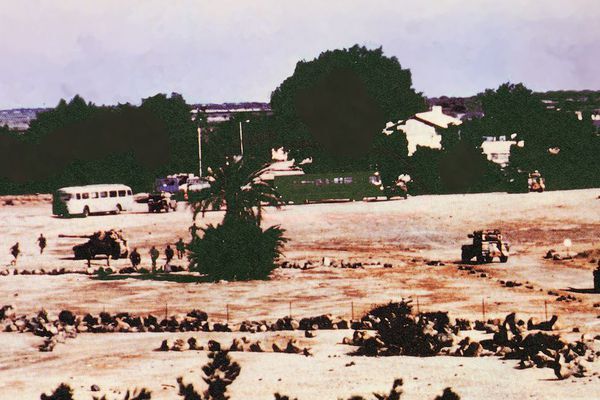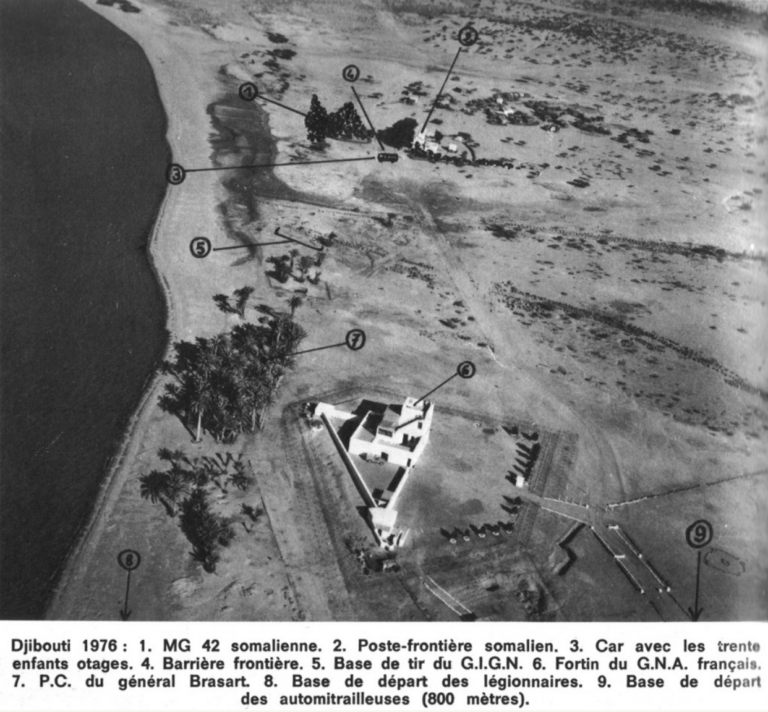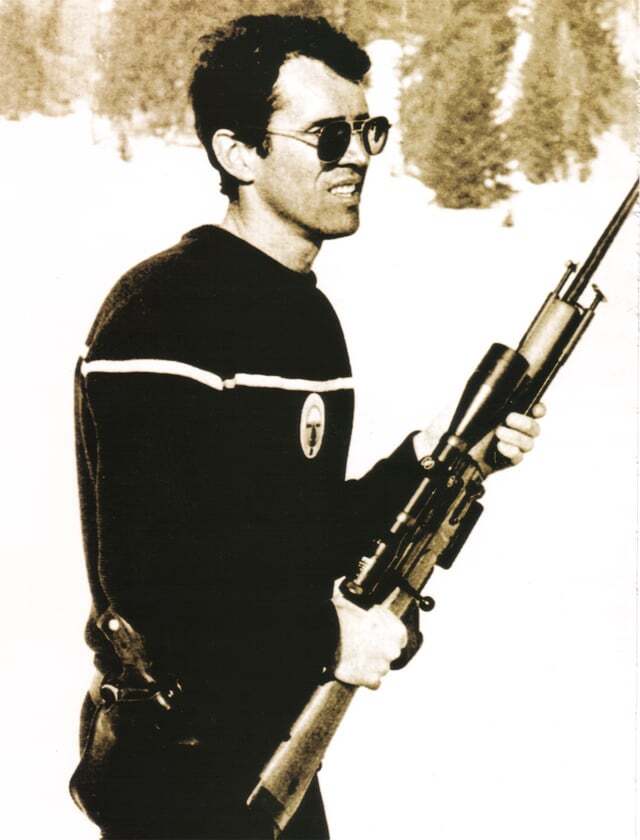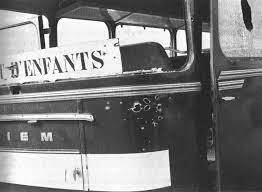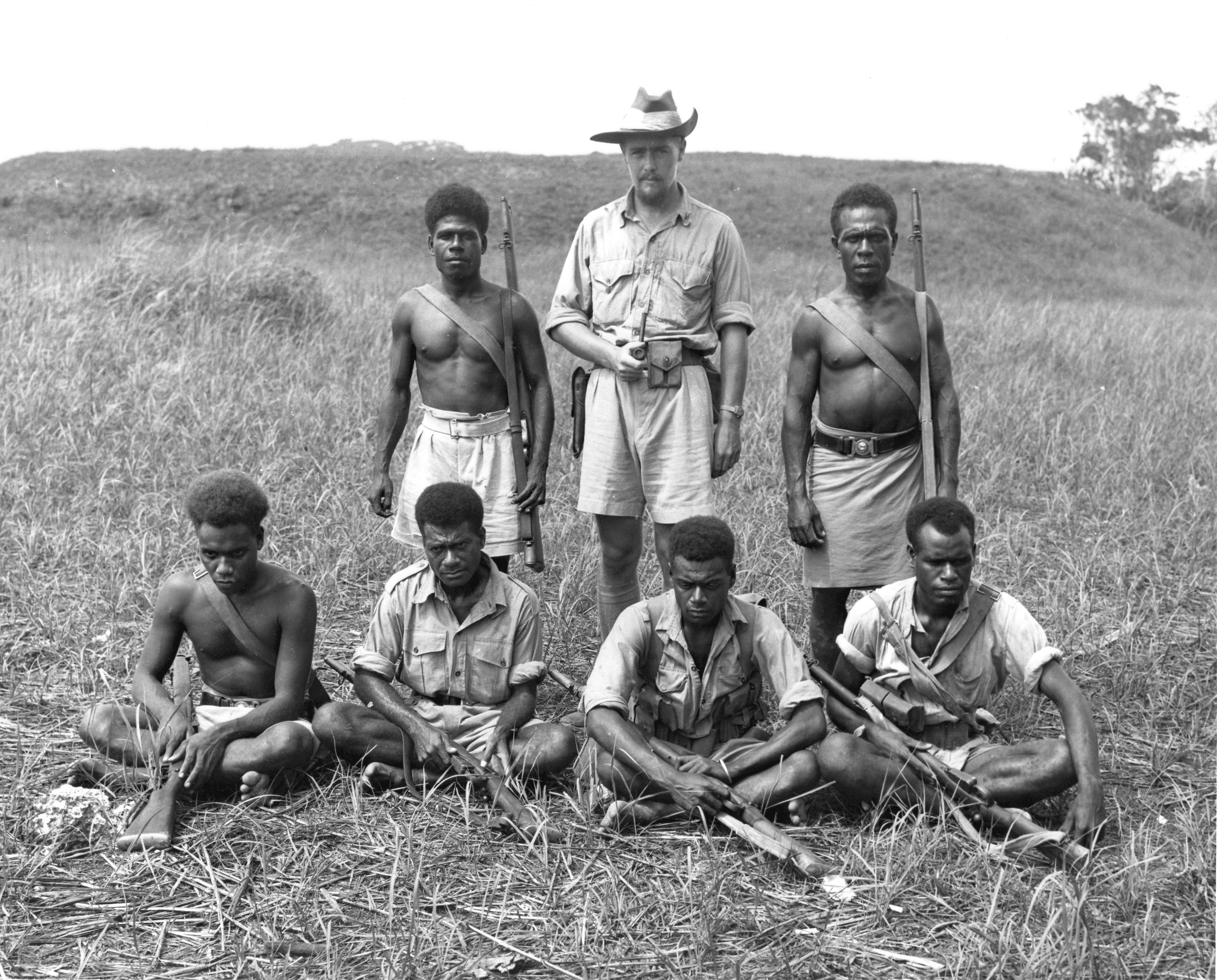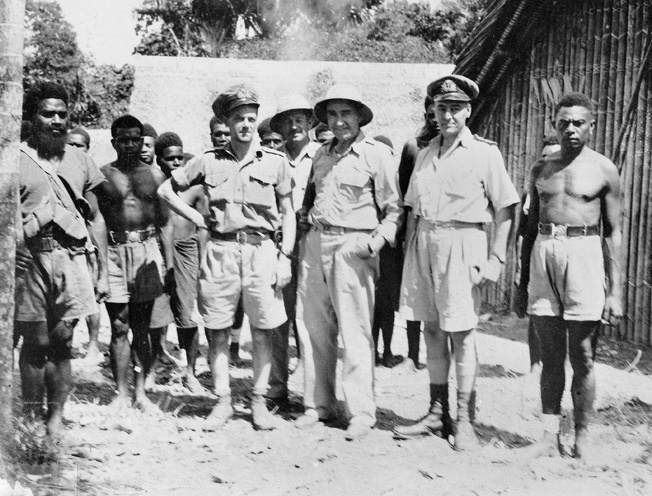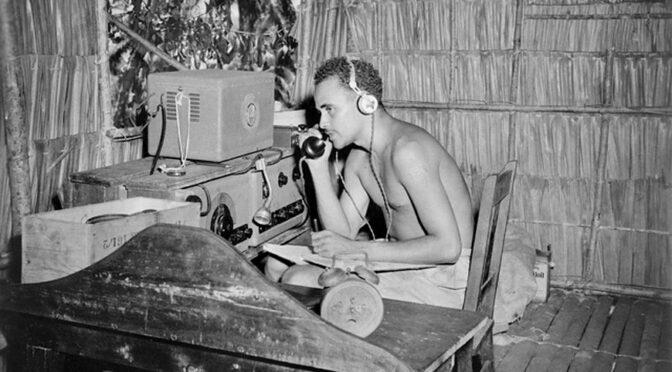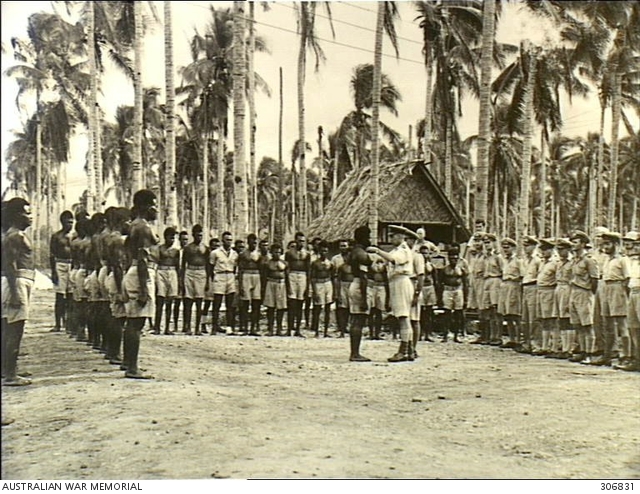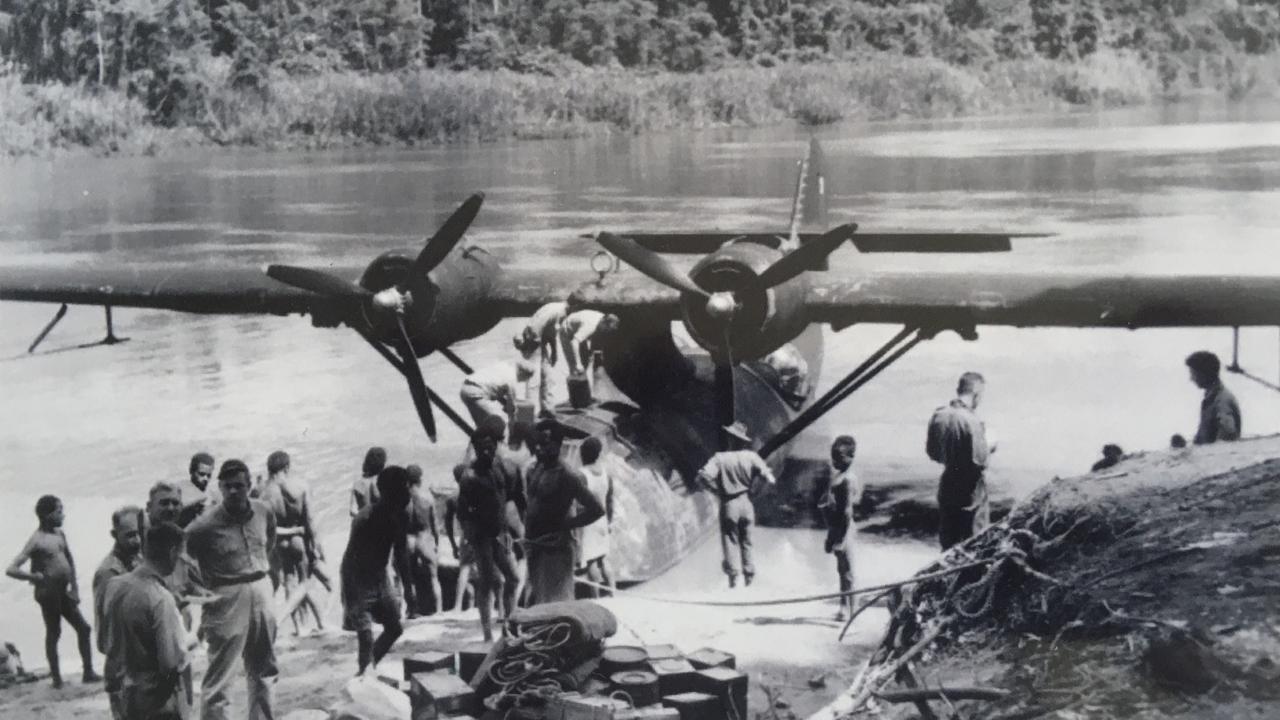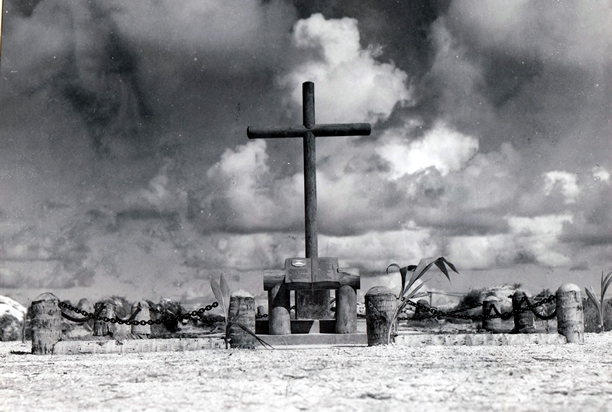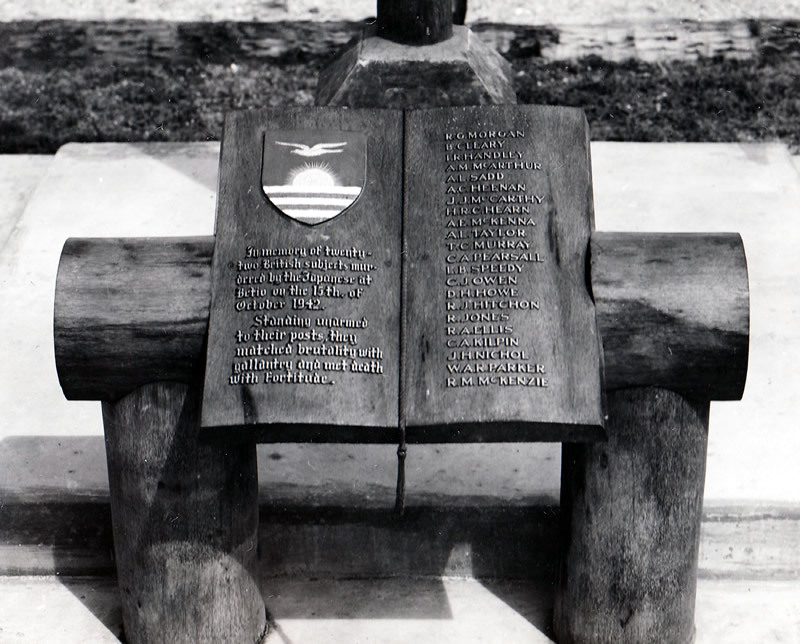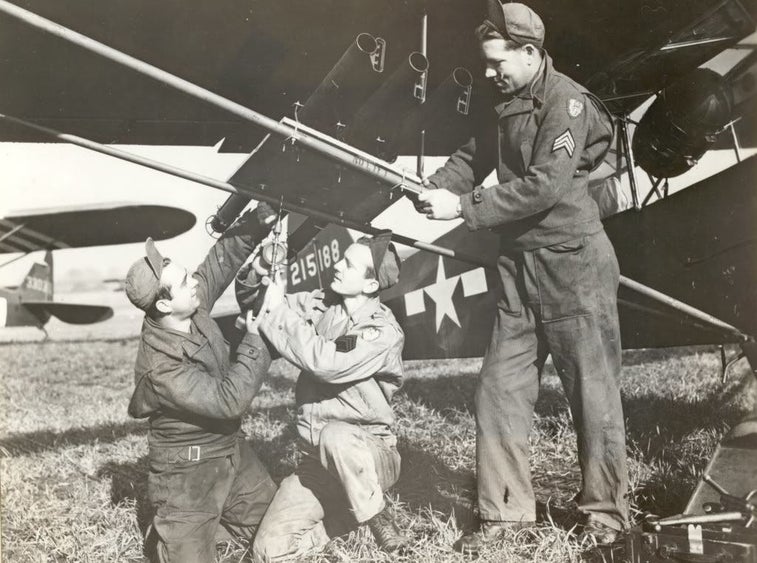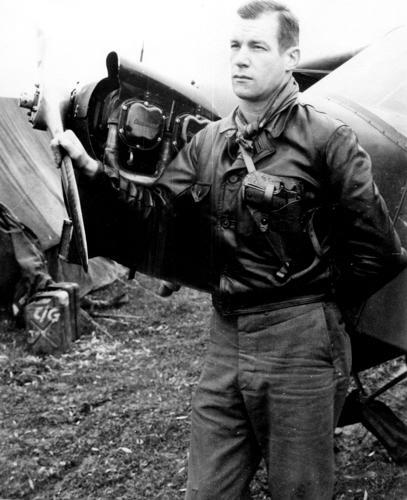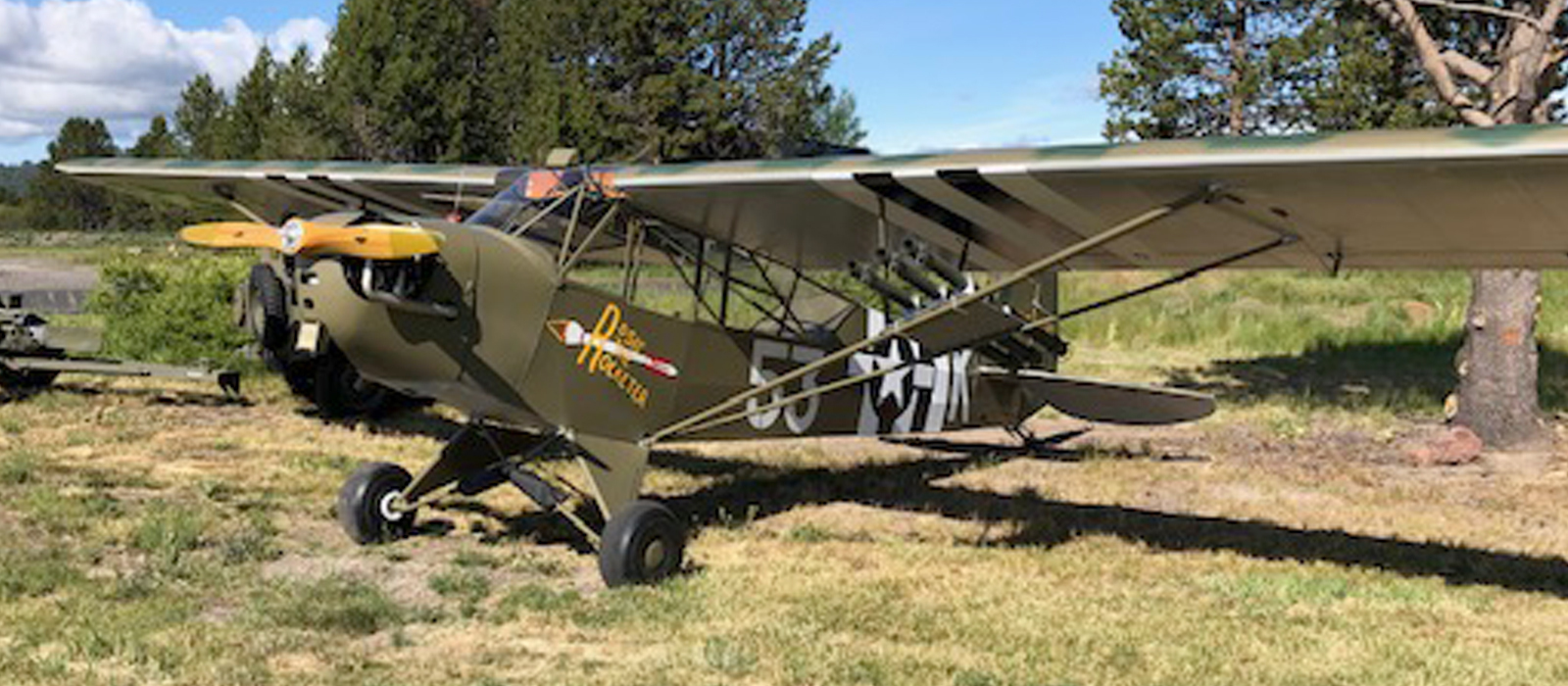- Posts: 1270
- Thank you received: 1797
Little stories
- Maki
-

- Offline
Less
More
2 years 11 months ago #97
by Maki
Replied by Maki on topic Little stories
Here’s why the military invented stink bombs
Gas masks worn in the 1940s to combat chemical warfareAt the sheer mention of the “stink bomb,” many of us are taken back to middle school. Panic ensues as adolescents run from a growing reek. But before they were a prank, before kids and adults were dropping stink bombs for fun … or just to cause a stir, they were actually a weapon. In fact, stink bombs of all strengths have been detonated against militaries, citizens, and in a variety of countries. Though they come in a variety of stench types, they are almost always unpleasant. They can most often be described as a rotten egg to ammonia smell, even including those that burn or irritate the nostrils. Stronger versions can cause victims to cough or have difficulties breathing.
Here’s how the stank weapons were created in the first place, and how they became a mainstay in crowd control to date. Some of the earliest stink bomb prototypes can be traced back to Leonardo da Vinci ; he and his men would send their contraptions via arrow, and upon impact they would begin to release an unpleasant smell. Though it’s unclear when the arrow-bound weapons were used and how badly they stunk. Hundreds of years go by without stink bombs making any real history waves, or having tracked how they advanced throughout the years. Then, during World War II, they had a glow-up. In a then-top-secret mission, American spies were set on a mission to develop and drop stink bombs as part of a new era of chemical warfare.The formula for such “S liquid” AKA stench liquid, was passed between American and British intelligence branches, along with two forms of delivery. One, poking a hole and discreetly spritzing a person in odor, and the second a perfume spritzer. Only rather than cologne, the diffuser would spray an incredible stink.
From there, the U.S. military spent years researching and developing the perfect unpleasant smell. The goal, of course, was to discredit and upset the enemy by dousing them in an awful note. It was also predicted to embarrass Japanese soldiers through the release of a fecal smell. However, by the time the product was developed, WWII was complete. What’s worse is that millions of dollars were spent on the research, as it included top scientists and chemists to create not only the perfect combination of oils and smells. One of their inventions, the Standard Bathroom Malodor, is said to be the worst-smelling combination. It consists of: dipropylene glycol, various acids and compounds, and Skatole, which accounts for fecal smells in bird and mammal waste. But it wasn’t for nothing, in years since, stink bombs have been weaponized and used as a riot control technique, channeling crowds away from the direction of their terrible smells.
An example of crowd control where stink bombs can be used. In most cases, law enforcement wears gas masks before the gasses are released.
In 1972, four stink bombs were dropped, interrupting the presidential campaign of hopeful Edmund Muskie (who lost to Richard Nixon). Stink bombs were reported at the Florida presidential primary, picnics in Miami and Tampa, and at campaign phone banks in Tampa.
In 2004, Israeli forces made their own “Skunk Bomb,” which produces a synthetic smell designed after studying the anal glands of the skunk. Its emissions are shown to last on clothes for five years, even after they are washed.
owever, the most common use of stink bombs remains as pranks, tricksters who use them can either make the stink bombs on their own or purchase them by the masses in various forms. This includes the original liquid in glass/plastic casing, spray bottles full of the stench, or individually packaged stink makers. Though these items are easily accessible in consumer markets, they are far less powerful than their military grade counterparts. Time will tell if they will be used in a military or war setting in the future. But for the time being, stink bombs remain a regular crowd control proceedure.
Gas masks worn in the 1940s to combat chemical warfareAt the sheer mention of the “stink bomb,” many of us are taken back to middle school. Panic ensues as adolescents run from a growing reek. But before they were a prank, before kids and adults were dropping stink bombs for fun … or just to cause a stir, they were actually a weapon. In fact, stink bombs of all strengths have been detonated against militaries, citizens, and in a variety of countries. Though they come in a variety of stench types, they are almost always unpleasant. They can most often be described as a rotten egg to ammonia smell, even including those that burn or irritate the nostrils. Stronger versions can cause victims to cough or have difficulties breathing.
Here’s how the stank weapons were created in the first place, and how they became a mainstay in crowd control to date. Some of the earliest stink bomb prototypes can be traced back to Leonardo da Vinci ; he and his men would send their contraptions via arrow, and upon impact they would begin to release an unpleasant smell. Though it’s unclear when the arrow-bound weapons were used and how badly they stunk. Hundreds of years go by without stink bombs making any real history waves, or having tracked how they advanced throughout the years. Then, during World War II, they had a glow-up. In a then-top-secret mission, American spies were set on a mission to develop and drop stink bombs as part of a new era of chemical warfare.The formula for such “S liquid” AKA stench liquid, was passed between American and British intelligence branches, along with two forms of delivery. One, poking a hole and discreetly spritzing a person in odor, and the second a perfume spritzer. Only rather than cologne, the diffuser would spray an incredible stink.
From there, the U.S. military spent years researching and developing the perfect unpleasant smell. The goal, of course, was to discredit and upset the enemy by dousing them in an awful note. It was also predicted to embarrass Japanese soldiers through the release of a fecal smell. However, by the time the product was developed, WWII was complete. What’s worse is that millions of dollars were spent on the research, as it included top scientists and chemists to create not only the perfect combination of oils and smells. One of their inventions, the Standard Bathroom Malodor, is said to be the worst-smelling combination. It consists of: dipropylene glycol, various acids and compounds, and Skatole, which accounts for fecal smells in bird and mammal waste. But it wasn’t for nothing, in years since, stink bombs have been weaponized and used as a riot control technique, channeling crowds away from the direction of their terrible smells.
An example of crowd control where stink bombs can be used. In most cases, law enforcement wears gas masks before the gasses are released.
In 1972, four stink bombs were dropped, interrupting the presidential campaign of hopeful Edmund Muskie (who lost to Richard Nixon). Stink bombs were reported at the Florida presidential primary, picnics in Miami and Tampa, and at campaign phone banks in Tampa.
In 2004, Israeli forces made their own “Skunk Bomb,” which produces a synthetic smell designed after studying the anal glands of the skunk. Its emissions are shown to last on clothes for five years, even after they are washed.
owever, the most common use of stink bombs remains as pranks, tricksters who use them can either make the stink bombs on their own or purchase them by the masses in various forms. This includes the original liquid in glass/plastic casing, spray bottles full of the stench, or individually packaged stink makers. Though these items are easily accessible in consumer markets, they are far less powerful than their military grade counterparts. Time will tell if they will be used in a military or war setting in the future. But for the time being, stink bombs remain a regular crowd control proceedure.
The following user(s) said Thank You: snowman, Damni, jacobston
Please Log in or Create an account to join the conversation.
- Maki
-

- Offline
Less
More
- Posts: 1270
- Thank you received: 1797
2 years 10 months ago #98
by Maki
Replied by Maki on topic Little stories
This British infantry rifle is one of the quietest rifles ever made
In 1943, at the height of World War II in Europe and beyond , two men met at a building overlooking the River Thames in the Westminster area of London. One of the men was Air Ministry engineer William Godfray de Lisle and the other was an officer of the British Combined Operations Department, Maj. Sir Malcolm Campbell. Campbell’s office oversaw raids on German positions throughout the European theater. De Lisle was there to show the officer a new weapon he’d designed. It was a .22-caliber rifle designed with an internal suppressor, supposedly one of the quietest weapons ever made. The men decided the best way to test its volume would be to fire it over the heads of the Londoners below and into the river.
No one heard a single shot. Campbell ordered De Lisle to create a 9-millimeter version, and later a .45-caliber version of the same weapon. The .45 would be just as quiet and even produced no visible muzzle flash . At 50 yards, no one would hear the weapon’s discharge. It seemed to be the perfect clandestine weapon.Its firing test revealed a decibel range that topped out at 85.5, the same volume of a truck passing by. Without any kind of suppression, a normal handgun will create upwards of 168 decibels. Most suppressed firearms will only be slightly lower, between 117 and 140 decibels, which is the same volume as many firecrackers. Not exactly the level of noise a secret operation might prefer. The bolt action of the De Lisle weapons was actually louder than the shot it fired.
The newer weapons created by De Lisle were a kind of Frankenstein weapon. It was a shortened Thompson submachine gun body and ported it from the front of the chamber to the bore. It slowed the bullet down, but it was still lethal – all without too much noise or muzzle flash. It used a Lee-Enfield bolt, a modified M1911 magazine to feed round, and was accurate at 50 feet. From there, De Lisle produced versions of his weapon that included carbines for British commandos, along with rifles with folding stocks for airborne use. They were handmade by De Lisle, by the automobile factory Ford Dagenham, and by the Sterling Armaments Company. Less than 200 were made, but those that used the weapons in combat found them extremely useful.
Sir Malcom Campbell.
Campbell used the weapon in the Combined Operations “Red Indian Raids.” that’s what the Germans called their quick cross-channel attacks. Field trials during the war reported its efficient use, and at least two high-ranking German officers were killed by the Special Operations Executive using the De Lisle Rifle. It could even fire more than 5,000 rounds with being disassembled for cleaning. All told, the effort produced an efficient killing machine, and quite possibly the world’s quietest firearm , which it still might be today. New variants of the weapon never made it to the field during World War II, because the war ended before they could be introduced or mass produced. Still, British Intelligence, commandos and special operators had a new, silent weapon, one that would soon be used all over the world to clandestinely devastating effect. The British Special Air Service would use the weapons in the Korean War, the Malayan emergency, and the Troubles in Northern Ireland. It was also probably used by MI-6 operations during the Cold War and there are even photos of Americans using the weapon in Vietnam.
In 1943, at the height of World War II in Europe and beyond , two men met at a building overlooking the River Thames in the Westminster area of London. One of the men was Air Ministry engineer William Godfray de Lisle and the other was an officer of the British Combined Operations Department, Maj. Sir Malcolm Campbell. Campbell’s office oversaw raids on German positions throughout the European theater. De Lisle was there to show the officer a new weapon he’d designed. It was a .22-caliber rifle designed with an internal suppressor, supposedly one of the quietest weapons ever made. The men decided the best way to test its volume would be to fire it over the heads of the Londoners below and into the river.
No one heard a single shot. Campbell ordered De Lisle to create a 9-millimeter version, and later a .45-caliber version of the same weapon. The .45 would be just as quiet and even produced no visible muzzle flash . At 50 yards, no one would hear the weapon’s discharge. It seemed to be the perfect clandestine weapon.Its firing test revealed a decibel range that topped out at 85.5, the same volume of a truck passing by. Without any kind of suppression, a normal handgun will create upwards of 168 decibels. Most suppressed firearms will only be slightly lower, between 117 and 140 decibels, which is the same volume as many firecrackers. Not exactly the level of noise a secret operation might prefer. The bolt action of the De Lisle weapons was actually louder than the shot it fired.
The newer weapons created by De Lisle were a kind of Frankenstein weapon. It was a shortened Thompson submachine gun body and ported it from the front of the chamber to the bore. It slowed the bullet down, but it was still lethal – all without too much noise or muzzle flash. It used a Lee-Enfield bolt, a modified M1911 magazine to feed round, and was accurate at 50 feet. From there, De Lisle produced versions of his weapon that included carbines for British commandos, along with rifles with folding stocks for airborne use. They were handmade by De Lisle, by the automobile factory Ford Dagenham, and by the Sterling Armaments Company. Less than 200 were made, but those that used the weapons in combat found them extremely useful.
Sir Malcom Campbell.
Campbell used the weapon in the Combined Operations “Red Indian Raids.” that’s what the Germans called their quick cross-channel attacks. Field trials during the war reported its efficient use, and at least two high-ranking German officers were killed by the Special Operations Executive using the De Lisle Rifle. It could even fire more than 5,000 rounds with being disassembled for cleaning. All told, the effort produced an efficient killing machine, and quite possibly the world’s quietest firearm , which it still might be today. New variants of the weapon never made it to the field during World War II, because the war ended before they could be introduced or mass produced. Still, British Intelligence, commandos and special operators had a new, silent weapon, one that would soon be used all over the world to clandestinely devastating effect. The British Special Air Service would use the weapons in the Korean War, the Malayan emergency, and the Troubles in Northern Ireland. It was also probably used by MI-6 operations during the Cold War and there are even photos of Americans using the weapon in Vietnam.
The following user(s) said Thank You: snowman, Juanma66, Damni, jacobston
Please Log in or Create an account to join the conversation.
- Maki
-

- Offline
Less
More
- Posts: 1270
- Thank you received: 1797
2 years 9 months ago - 2 years 9 months ago #99
by Maki
Replied by Maki on topic Little stories
This elite French unit developed the synchronized sniper shot
A GIGN sniper behind an FR F1 rifle
In 2009, the rescue of Captain Phillips from Somali pirates made the synchronized shot a public sensation. The amount of training, discipline and coordination needed to pull off simultaneous shots to neutralize multiple threats at once is impressive to say the least. It has been featured in movies, TV shows and video games and has become synonymous with U.S. Special Forces. However, in reality, they learned it from the French.The Groupe d’intervention de la Gendarmerie nationale , GIGN, is the elite tactical unit of the French National Police. They specialize in counterterrorism, dignitary protection and, of course, hostage rescue. In 1973, following the Munich Massacre at the 1972 Summer Olympics , the Équipe commando régionale d’intervention, ECRI, was formed as a small counterterrorism unit of skilled officers. The ECRI became operational in March 1974 under the command of then-lieutenant Christian Prouteau and conducted its first mission just 10 days later.
Christian Prouteau (right) directs GIGN operators in revolver training
Along with the ECRI, the GIGN was formed under the Gendarmerie’s parachute squadron. The two units merged under Prouteau’s command as the GIGN in 1976. With this, the GIGN’s strength increased from 15 to 32 operators. That same year, the GIGN would prove itself with one of the most daring hostage rescue missions in history.On the morning of February 3, 1976, a school bus in the French Territory of Afars and Issas, TFAI, was hijacked by four militants of the Somali Coast Liberation Front, FLCS. Sponsored by the new Somali government, their goal was to liberate the TFAI and integrate it into Somalia. The 31 students aboard the bus were children of French servicemen posted in the TFAI, perfect targets for the FLCS.
The school bus sits in no man’s land near the Somali border
In control, the hijackers ordered the bus driver to drive to Loyada, the only border crossing between the TFAI and Somalia at the time. The bus blew threw a Gendarmerie checkpoint where the kidnappers fired on the police who gave chase. Arriving at Loyada, the bus was stopped by legionnaires of the 13th Foreign Legion Half-Brigade, a French Foreign Legion unit permanently stationed the TFAI. Negotiations ensued until French officials gave the order to allow the bus through the checkpoint and park in the no man’s land between the borders, just a few dozen yards from the Somali checkpoint.The GIGN was immediately alerted to the hostage situation and ordered to the TFAI, their first operation outside of France. A nine-man sniper team, led by Prouteau, arrived on the morning of February 4. Coordinating with the Foreign Legion who established positions on the French side of no man’s land, the GIGN snipers positioned about 90 yards in front of the legionnaires. Meanwhile, the hijackers were reinforced by Somali Army troops across the border .
The new and relatively unknown GIGN were not fully trusted by the Foreign Legion. Moreover, the operators arrived with long hair and civilian clothes. Prouteau himself wore glasses and was reportedly mocked by the Foreign Legion general for this. Regardless, the only viable rescue plan relied on the GIGN’s newly developed synchronized sniper shot to neutralize the four hijackers on the bus. This would allow legionnaires to assault the bus and establish defensive positions around it to hold off the Somali Army while the children were evacuated.To execute the synchronized shot, the snipers counted off from left to right. In French, the first sniper would report, “One, ready,” if he had his target in sight. This would go down the firing line to ensure that all shooters were prepared to fire. If a sniper did not have a clean shot on his target, he would say so and the code would start over from the beginning. If all shooters reported ready, the commander would count, “Zero, zero, zero.” On the third count, all snipers would fire and take their targets out at the same time.
Prouteau with an FR F1 rifle, the same kind used at Loyada
At 3:45pm on February 4, the GIGN snipers executed a perfect synchronized shot and killed all four kidnappers on the bus. However, the dismounted legionnaires who were supposed to advance the 300 yards across no man’s land to the school bus were slowed by Somali machine gun fire from across the border. Additionally, a fifth militant had stationed himself in the brush near the bus overnight. Running onto the bus as the fighting broke out, he fired a burst from his rifle that tragically killed one schoolgirl.Seeing that the bulk of the Foreign Legion was pinned down, two GIGN operators ditched their precision rifles and charged the bus with their Manurhin MR 73 revolvers . The militant on the bus wounded a legionnaire who attempted to engage him and took a child as a human shield. After braving the machine gun fire that crisscrossed no man’s land, the GIGN operators reached the bus. One of them placed a well-aimed revolver shot into the militant’s neck, killing him.
The bullet-ridden bus after the firefight
The legionnaires and their armored vehicles eventually made it to the bus to provide cover while the children were evacuated. At 4:05pm, the fighting was over. In addition to the one girl who was killed by the fifth militant, five children were wounded during the engagement. Two of these children, a boy and girl, were seriously wounded and immediately evacuated to France. The girl died of her wounds on February 13 and, although the boy survived, he was left disfigured and died in 2014. One schoolboy was kidnapped by militants into Somalia and released three days later.The bus driver, who was a French soldier, one legionnaire, and a female social assistant with the legionnaires who volunteered to join the children the day before were wounded during the fighting. 20 FLCS militants and Somali soldiers were wounded and seven militants were killed. Somali officials reported six of their soldiers were killed while the official French report lists just one Somali soldier killed. The 1976 Loyada hostage rescue mission validated the GIGN’s synchronized sniper shot which was later taught to other specialized units like Britain’s SAS and America’s Delta Force and SEAL Team Six . Prouteau’s unit also pioneered helicopter fast-roping which has been adopted by militaries and police around the world.
You can see here the movie about this hostage taking .
A GIGN sniper behind an FR F1 rifle
In 2009, the rescue of Captain Phillips from Somali pirates made the synchronized shot a public sensation. The amount of training, discipline and coordination needed to pull off simultaneous shots to neutralize multiple threats at once is impressive to say the least. It has been featured in movies, TV shows and video games and has become synonymous with U.S. Special Forces. However, in reality, they learned it from the French.The Groupe d’intervention de la Gendarmerie nationale , GIGN, is the elite tactical unit of the French National Police. They specialize in counterterrorism, dignitary protection and, of course, hostage rescue. In 1973, following the Munich Massacre at the 1972 Summer Olympics , the Équipe commando régionale d’intervention, ECRI, was formed as a small counterterrorism unit of skilled officers. The ECRI became operational in March 1974 under the command of then-lieutenant Christian Prouteau and conducted its first mission just 10 days later.
Christian Prouteau (right) directs GIGN operators in revolver training
Along with the ECRI, the GIGN was formed under the Gendarmerie’s parachute squadron. The two units merged under Prouteau’s command as the GIGN in 1976. With this, the GIGN’s strength increased from 15 to 32 operators. That same year, the GIGN would prove itself with one of the most daring hostage rescue missions in history.On the morning of February 3, 1976, a school bus in the French Territory of Afars and Issas, TFAI, was hijacked by four militants of the Somali Coast Liberation Front, FLCS. Sponsored by the new Somali government, their goal was to liberate the TFAI and integrate it into Somalia. The 31 students aboard the bus were children of French servicemen posted in the TFAI, perfect targets for the FLCS.
The school bus sits in no man’s land near the Somali border
In control, the hijackers ordered the bus driver to drive to Loyada, the only border crossing between the TFAI and Somalia at the time. The bus blew threw a Gendarmerie checkpoint where the kidnappers fired on the police who gave chase. Arriving at Loyada, the bus was stopped by legionnaires of the 13th Foreign Legion Half-Brigade, a French Foreign Legion unit permanently stationed the TFAI. Negotiations ensued until French officials gave the order to allow the bus through the checkpoint and park in the no man’s land between the borders, just a few dozen yards from the Somali checkpoint.The GIGN was immediately alerted to the hostage situation and ordered to the TFAI, their first operation outside of France. A nine-man sniper team, led by Prouteau, arrived on the morning of February 4. Coordinating with the Foreign Legion who established positions on the French side of no man’s land, the GIGN snipers positioned about 90 yards in front of the legionnaires. Meanwhile, the hijackers were reinforced by Somali Army troops across the border .
The new and relatively unknown GIGN were not fully trusted by the Foreign Legion. Moreover, the operators arrived with long hair and civilian clothes. Prouteau himself wore glasses and was reportedly mocked by the Foreign Legion general for this. Regardless, the only viable rescue plan relied on the GIGN’s newly developed synchronized sniper shot to neutralize the four hijackers on the bus. This would allow legionnaires to assault the bus and establish defensive positions around it to hold off the Somali Army while the children were evacuated.To execute the synchronized shot, the snipers counted off from left to right. In French, the first sniper would report, “One, ready,” if he had his target in sight. This would go down the firing line to ensure that all shooters were prepared to fire. If a sniper did not have a clean shot on his target, he would say so and the code would start over from the beginning. If all shooters reported ready, the commander would count, “Zero, zero, zero.” On the third count, all snipers would fire and take their targets out at the same time.
Prouteau with an FR F1 rifle, the same kind used at Loyada
At 3:45pm on February 4, the GIGN snipers executed a perfect synchronized shot and killed all four kidnappers on the bus. However, the dismounted legionnaires who were supposed to advance the 300 yards across no man’s land to the school bus were slowed by Somali machine gun fire from across the border. Additionally, a fifth militant had stationed himself in the brush near the bus overnight. Running onto the bus as the fighting broke out, he fired a burst from his rifle that tragically killed one schoolgirl.Seeing that the bulk of the Foreign Legion was pinned down, two GIGN operators ditched their precision rifles and charged the bus with their Manurhin MR 73 revolvers . The militant on the bus wounded a legionnaire who attempted to engage him and took a child as a human shield. After braving the machine gun fire that crisscrossed no man’s land, the GIGN operators reached the bus. One of them placed a well-aimed revolver shot into the militant’s neck, killing him.
The bullet-ridden bus after the firefight
The legionnaires and their armored vehicles eventually made it to the bus to provide cover while the children were evacuated. At 4:05pm, the fighting was over. In addition to the one girl who was killed by the fifth militant, five children were wounded during the engagement. Two of these children, a boy and girl, were seriously wounded and immediately evacuated to France. The girl died of her wounds on February 13 and, although the boy survived, he was left disfigured and died in 2014. One schoolboy was kidnapped by militants into Somalia and released three days later.The bus driver, who was a French soldier, one legionnaire, and a female social assistant with the legionnaires who volunteered to join the children the day before were wounded during the fighting. 20 FLCS militants and Somali soldiers were wounded and seven militants were killed. Somali officials reported six of their soldiers were killed while the official French report lists just one Somali soldier killed. The 1976 Loyada hostage rescue mission validated the GIGN’s synchronized sniper shot which was later taught to other specialized units like Britain’s SAS and America’s Delta Force and SEAL Team Six . Prouteau’s unit also pioneered helicopter fast-roping which has been adopted by militaries and police around the world.
You can see here the movie about this hostage taking .
Last edit: 2 years 9 months ago by snowman.
The following user(s) said Thank You: snowman, Damni, jacobston
Please Log in or Create an account to join the conversation.
- snowman
-

- Offline
- Your most dear friend.
2 years 9 months ago #100
by snowman
The following user(s) said Thank You: jacobston
Please Log in or Create an account to join the conversation.
- Maki
-

- Offline
Less
More
- Posts: 1270
- Thank you received: 1797
2 years 3 weeks ago - 2 years 3 weeks ago #101
by Maki
Replied by Maki on topic Little stories
Coastwatchers
Captain Martin Clemens (rear centre), a coastwatcher on Guadalcanal, provided intelligence to Allied forces during the battle for the island (August 1942 – February 1943).
After Imperial Japan formally kicked off World War II in the Pacific by attacking the U.S. Navy fleet at Pearl Harbor, Hawaii, in December 1941, Japanese forces made lightning-fast advances in the South Pacific. By early 1942, Japan had occupied all of southeast Asia, threatening India in the west, Australia in the south, and Hawaii in the east.
Surging from former Imperial German island colonies in the central Pacific that Japan had acquired at the end of World War I, they quickly overran island archipelagos, such as the Admiralties and the Solomons in the far South Pacific, close to Australia. These remote islands often had plantations owned by individuals and corporations and administered by Australian, New Zealand, and British nationals.
While the Japanese conquest was rapid, it had been long anticipated by Australian, New Zealand and British military intelligence agencies. As far back as the 1920s and 1930s, plantation owners and managers on these remote islands were actively recruited, trained, and supplied with radios and other equipment by Australian military intelligence. When the war broke out, these civilian volunteers became the Coastwatchers. The force grew to over six hundred personnel serving behind the Japanese lines.
Formally known by names such as the Coast Watch Organisation, Combined Field Intelligence Service or Section C, Allied Intelligence Bureau, they began to observe and report enemy movements and rescue nationals from Allied nations stranded by the Japanese onslaught. The work was dangerous, and in addition to working behind Japanese lines with extremely limited resources and supplies, they had to contend with life-threatening tropical diseases. Many civilian Coastwatchers were rugged, independent types who had good relations with and the trust of local Indigenous island peoples. Some of the islands had Indigenous police, constabulary, and paramilitary organizations in place before the war. When the Imperial Japanese demonstrated their typical contempt for conquered peoples and implemented heavy-handed control over the Indigenous populations, the Coastwatchers soon had many ready recruits.
With radar in its infancy, and given the vast distances involved, the Coastwatchers and their Indigenous allies became indispensable in providing early warning of Imperial
Japanese aircraft and ships headed out to attack the Allies in various island campaigns, such as Guadalcanal. U.S. Admiral William Halsey Jr., the acerbic commander of Naval forces during the Solomon Islands campaign, gave high praise to the Coastwatchers: “The Coastwatchers saved Guadalcanal, and Guadalcanal saved the South Pacific.”
Many downed Allied fliers and shipwrecked sailors were also rescued by Indigenous people working with coastwatcher organizations, who sometimes had to barter for these airmen with neutral tribes who had not yet encountered the Japanese. When future U.S. president John F. Kennedy’s patrol boat, PT 109, was destroyed in action against the Japanese Navy in the waters around Guadalcanal, Kennedy, and the surviving members of his crew were rescued through the efforts of an Australian coastwatcher. In July 2022, Australian Coastwatchers James Burrowes and Ronald George Lee were still living and were honored in a wreath-laying ceremony by U.S. Ambassador to Australia Caroline Kennedy, daughter of President Kennedy, at the Australian War Memorial in the capital city of Canberra.
“The event was a very special and personal acknowledgment by Ambassador Kennedy and the US government of the role we had as Aussie Coastwatchers eight decades ago. I am proud at 98 to meet Her Excellency and share Coastwatcher stories. The time I spent in the Solomons and other locations as a Coastwatcher is as vivid today as it was then. It has been an honor to participate in this memorial event,” Australian World War II veteran Mr. Ronald (Dixie) George Lee said.As the war in the South Pacific progressed, the traditional role of coast watching organizations to observe, and report expanded to the even more dangerous work of reconnoitering potential landing beaches as the Allies began their strategic island-hopping campaign towards the home islands of Japan. Forehand knowledge of the reefs, tides, and shore conditions of remote, Japanese-held islands was critical to successful amphibious assaults. Although many Coastwatchers were formally commissioned as officers in the Australian Naval Reserves, for their protection in case of capture, this was disregarded by the Japanese. In 1942, 17 New Zealand Coastwatchers were captured in the Gilbert Islands and were executed by the Japanese in October 1942 following an American air raid, part of the preparation for the attack on Tarawa by the U.S. Marines.
Memorial to New Zealand coastwatchers on Tarawa
Although they rarely engaged in open combat, the Coast Watchers performed missions, such as beach reconnaissance and organizing local forces in occupied territory, that would later come under unconventional warfare units such as the U.S. Navy SEALS, the British Special Air Service, and U.S. Special Forces.
Captain Martin Clemens (rear centre), a coastwatcher on Guadalcanal, provided intelligence to Allied forces during the battle for the island (August 1942 – February 1943).
After Imperial Japan formally kicked off World War II in the Pacific by attacking the U.S. Navy fleet at Pearl Harbor, Hawaii, in December 1941, Japanese forces made lightning-fast advances in the South Pacific. By early 1942, Japan had occupied all of southeast Asia, threatening India in the west, Australia in the south, and Hawaii in the east.
Surging from former Imperial German island colonies in the central Pacific that Japan had acquired at the end of World War I, they quickly overran island archipelagos, such as the Admiralties and the Solomons in the far South Pacific, close to Australia. These remote islands often had plantations owned by individuals and corporations and administered by Australian, New Zealand, and British nationals.
While the Japanese conquest was rapid, it had been long anticipated by Australian, New Zealand and British military intelligence agencies. As far back as the 1920s and 1930s, plantation owners and managers on these remote islands were actively recruited, trained, and supplied with radios and other equipment by Australian military intelligence. When the war broke out, these civilian volunteers became the Coastwatchers. The force grew to over six hundred personnel serving behind the Japanese lines.
Formally known by names such as the Coast Watch Organisation, Combined Field Intelligence Service or Section C, Allied Intelligence Bureau, they began to observe and report enemy movements and rescue nationals from Allied nations stranded by the Japanese onslaught. The work was dangerous, and in addition to working behind Japanese lines with extremely limited resources and supplies, they had to contend with life-threatening tropical diseases. Many civilian Coastwatchers were rugged, independent types who had good relations with and the trust of local Indigenous island peoples. Some of the islands had Indigenous police, constabulary, and paramilitary organizations in place before the war. When the Imperial Japanese demonstrated their typical contempt for conquered peoples and implemented heavy-handed control over the Indigenous populations, the Coastwatchers soon had many ready recruits.
With radar in its infancy, and given the vast distances involved, the Coastwatchers and their Indigenous allies became indispensable in providing early warning of Imperial
Japanese aircraft and ships headed out to attack the Allies in various island campaigns, such as Guadalcanal. U.S. Admiral William Halsey Jr., the acerbic commander of Naval forces during the Solomon Islands campaign, gave high praise to the Coastwatchers: “The Coastwatchers saved Guadalcanal, and Guadalcanal saved the South Pacific.”
Many downed Allied fliers and shipwrecked sailors were also rescued by Indigenous people working with coastwatcher organizations, who sometimes had to barter for these airmen with neutral tribes who had not yet encountered the Japanese. When future U.S. president John F. Kennedy’s patrol boat, PT 109, was destroyed in action against the Japanese Navy in the waters around Guadalcanal, Kennedy, and the surviving members of his crew were rescued through the efforts of an Australian coastwatcher. In July 2022, Australian Coastwatchers James Burrowes and Ronald George Lee were still living and were honored in a wreath-laying ceremony by U.S. Ambassador to Australia Caroline Kennedy, daughter of President Kennedy, at the Australian War Memorial in the capital city of Canberra.
“The event was a very special and personal acknowledgment by Ambassador Kennedy and the US government of the role we had as Aussie Coastwatchers eight decades ago. I am proud at 98 to meet Her Excellency and share Coastwatcher stories. The time I spent in the Solomons and other locations as a Coastwatcher is as vivid today as it was then. It has been an honor to participate in this memorial event,” Australian World War II veteran Mr. Ronald (Dixie) George Lee said.As the war in the South Pacific progressed, the traditional role of coast watching organizations to observe, and report expanded to the even more dangerous work of reconnoitering potential landing beaches as the Allies began their strategic island-hopping campaign towards the home islands of Japan. Forehand knowledge of the reefs, tides, and shore conditions of remote, Japanese-held islands was critical to successful amphibious assaults. Although many Coastwatchers were formally commissioned as officers in the Australian Naval Reserves, for their protection in case of capture, this was disregarded by the Japanese. In 1942, 17 New Zealand Coastwatchers were captured in the Gilbert Islands and were executed by the Japanese in October 1942 following an American air raid, part of the preparation for the attack on Tarawa by the U.S. Marines.
Memorial to New Zealand coastwatchers on Tarawa
Although they rarely engaged in open combat, the Coast Watchers performed missions, such as beach reconnaissance and organizing local forces in occupied territory, that would later come under unconventional warfare units such as the U.S. Navy SEALS, the British Special Air Service, and U.S. Special Forces.
Last edit: 2 years 3 weeks ago by snowman. Reason: Alignment of images and text
The following user(s) said Thank You: snowman, Juanma66
Please Log in or Create an account to join the conversation.
- Maki
-

- Offline
Less
More
- Posts: 1270
- Thank you received: 1797
2 years 6 days ago - 2 years 6 days ago #102
by Maki
Replied by Maki on topic Little stories
This tiny WWII prop plane used mounted bazookas against German tanks
The slow-moving L-4 Grasshopper was the ideal plane for spotting hidden German armor during World War II. With a top speed of around 75 miles per hour, it wasn’t the ideal fighter-bomber or ground attack aircraft. That role was best left to the Republic P-47 Thunderbolt, which could blaze across a field strafing enemy targets at well over 425 miles per hour. Or was it?If you asked Major Charles Carpenter, also known as “Bazooka Charlie,” he would tell you that it all depends on what the little L-4 Grasshopper is shooting at those targets. When he turned his Grasshopper into a bazooka six-shooter for the Battle of Arracourt, it looked a lot like the L-4 was just what the doctor ordered.
L-4 Grasshoppers were first built in 1938 and were dubbed Piper J-3 Cubs. They were light aircraft, slow-movers but were known for their handling and performance. They’re so reliable, many are still flown to this day, despite being an old-timey monoplane built with fabric over a steel skeleton. When the United States entered World War II, they were heartily embraced by the Civil Air Patrol as spotter aircraft, shipped to Britain in large quantities and even ferried important people throughout the war.Olive drab paint is all it took to make the Cub into its military variant, the Grasshopper. It could loiter for three hours at 12,000 feet and on top of spotting, it could haul the wounded to safety, transport supplies and recon a specific area. Major Charles Carpenter used it for something else entirely.Carpenter arrived in France in 1944 and was assigned as a spotter pilot, looking for enemy artillery positions in occupied France. Somewhere during his time in Europe, he learned that other L-4 Grasshopper pilots were arming their planes with bazookas, so he decided to join them. He added six infantry bazookas to the outboard jury struts on his plane, nicknamed “Rosie the Rocketer.”
Major Charles Carpenter
On Sept. 18, 1944, the German Army had assembled 262 tanks and armored artillery to assault the U.S. 4th Armored Division near Arracourt in France. The 4th was outnumbered but still able to put up a good fight. The difference was that the Germans were using a number of their new, superior Panther tanks, which outclassed the American M1 Sherman tank in range and frontal armor. For nearly 11 days, the two sides slugged it out on the ground in bad weather, negating Allied air superiority.Then, on Sept. 20, the Germans began an advance on the American headquarters and support elements. It wasn’t a strong attack, but it would be devastating, considering its target of opportunity. Maj. Carpenter was above the battlefield in Rosie the Rocketer, but had trouble making out positions on the ground in the weather. Then, around noon, the weather began to clear and Carpenter went straight for a company of Panthers advancing on the town. Despite heavy ground fire, he made slow but repeated passes, firing his bazookas the whole way. He would return to base to reload two times to attack the column. Firing at least 16 rounds, Carpenter was credited with two Panther kills and some armored cars. His gallantry in combat also forced the Germans to withdraw their attack on Arracourt that day.Bazooka Charlie would eventually be credited with destroying six total enemy tanks during the war, including two of Germany’s vaunted Tiger I tanks. After his fifth tank kill, he told Stars and Stripes, “Word must be getting around to watch out for Cubs with bazookas on them. Every time I show up now they shoot with everything they have. They never used to bother Cubs. Bazookas must be bothering them a bit."
The slow-moving L-4 Grasshopper was the ideal plane for spotting hidden German armor during World War II. With a top speed of around 75 miles per hour, it wasn’t the ideal fighter-bomber or ground attack aircraft. That role was best left to the Republic P-47 Thunderbolt, which could blaze across a field strafing enemy targets at well over 425 miles per hour. Or was it?If you asked Major Charles Carpenter, also known as “Bazooka Charlie,” he would tell you that it all depends on what the little L-4 Grasshopper is shooting at those targets. When he turned his Grasshopper into a bazooka six-shooter for the Battle of Arracourt, it looked a lot like the L-4 was just what the doctor ordered.
L-4 Grasshoppers were first built in 1938 and were dubbed Piper J-3 Cubs. They were light aircraft, slow-movers but were known for their handling and performance. They’re so reliable, many are still flown to this day, despite being an old-timey monoplane built with fabric over a steel skeleton. When the United States entered World War II, they were heartily embraced by the Civil Air Patrol as spotter aircraft, shipped to Britain in large quantities and even ferried important people throughout the war.Olive drab paint is all it took to make the Cub into its military variant, the Grasshopper. It could loiter for three hours at 12,000 feet and on top of spotting, it could haul the wounded to safety, transport supplies and recon a specific area. Major Charles Carpenter used it for something else entirely.Carpenter arrived in France in 1944 and was assigned as a spotter pilot, looking for enemy artillery positions in occupied France. Somewhere during his time in Europe, he learned that other L-4 Grasshopper pilots were arming their planes with bazookas, so he decided to join them. He added six infantry bazookas to the outboard jury struts on his plane, nicknamed “Rosie the Rocketer.”
Major Charles Carpenter
On Sept. 18, 1944, the German Army had assembled 262 tanks and armored artillery to assault the U.S. 4th Armored Division near Arracourt in France. The 4th was outnumbered but still able to put up a good fight. The difference was that the Germans were using a number of their new, superior Panther tanks, which outclassed the American M1 Sherman tank in range and frontal armor. For nearly 11 days, the two sides slugged it out on the ground in bad weather, negating Allied air superiority.Then, on Sept. 20, the Germans began an advance on the American headquarters and support elements. It wasn’t a strong attack, but it would be devastating, considering its target of opportunity. Maj. Carpenter was above the battlefield in Rosie the Rocketer, but had trouble making out positions on the ground in the weather. Then, around noon, the weather began to clear and Carpenter went straight for a company of Panthers advancing on the town. Despite heavy ground fire, he made slow but repeated passes, firing his bazookas the whole way. He would return to base to reload two times to attack the column. Firing at least 16 rounds, Carpenter was credited with two Panther kills and some armored cars. His gallantry in combat also forced the Germans to withdraw their attack on Arracourt that day.Bazooka Charlie would eventually be credited with destroying six total enemy tanks during the war, including two of Germany’s vaunted Tiger I tanks. After his fifth tank kill, he told Stars and Stripes, “Word must be getting around to watch out for Cubs with bazookas on them. Every time I show up now they shoot with everything they have. They never used to bother Cubs. Bazookas must be bothering them a bit."
Last edit: 2 years 6 days ago by snowman. Reason: First photo embeded correctly
The following user(s) said Thank You: snowman, Juanma66, jacobston
Please Log in or Create an account to join the conversation.
Birthdays
- N ø b ø d y
- NIB in 2 days
- xXTravmon in 5 days
- Tecnom in 9 days


